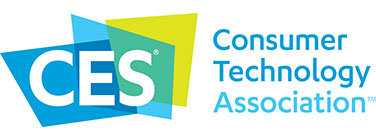IEEE Picks Most Interesting Emerging Technologies at CES
January 8, 2016
The IEEE (Institute of Electrical and Electronics Engineers), with more than 430,000 members in over 160 countries, has a pedigree in publishing technical literature and developing international standards. At CES 2016, its members are actively involved in the development and advancement of some of the hottest trends on the show floor. At an end-of-conference session, a group of IEEE members revealed what they found to be the most interesting technologies on display and how they’re working to improve them.
The session’s organizer, IP Action Partners president Stuart Lipoff, emphasized that the group wasn’t just looking for clever 1s and 0s. “This year’s theme is The Internet of Being,” he said. “It’s not just devices, it involves people.”
Virtual reality and augmented reality are the focus of Dr. Yu Yuan, who chairs the IEEE Digital Senses Initiative. “In order to facilitate further innovation and global collaboration, we are working with the industry for standards and public awareness,” he said. “We want to work with the industry to set fair and open benchmarks and address ethics, privacy and other issues.”
Dr. Nahum Gershon, senior principal scientist at the MITRE Corporation, talked about the improvements that need to be made to wearables, chiefly in terms of accuracy and acknowledging human behavior. With regard to the measured or quantified self and persistent physiological monitoring, he notes, “it has the potential of transforming medical practice,” but wondered if the amount of data presaged privacy and safety concerns.
5G is a work in progress, meaning that although it is targeted at being an evolution of 4G, no one really knows what it will do or be. Operating at much higher frequency ranges (up to 60GHz), 5G is envisioned for IoT, but offers challenges. One nice change up ahead: SIM cards will become virtual, enabling a user to have several and manage them.
Biometrics is Lipoff’s focus. “What’s happened is that this technology, which not long ago was only able to be processing on supercomputers, will now run on the processors in a phone,” he said. “We’ll find the next generation of biometrics in a phone.” Facial recognition and voice recognition can be used for profile management, while the cloud adds another layer of security.
Sunish Gupta from MIT addressed the importance of accessibility, urging developers to “make minor adjustments” to create user scenarios and, most importantly, perform test evaluations with disabled or elderly people. “Everyone will benefit,” he said. “It’s the ramp effect… it was built for wheelchairs, but it’s now used by skateboarders.”
University of Cordoba electronics professor Francisco José Bellido talked about the challenge of integrating services for smart homes, with “a clear need of standardization.” IEEE Fellow Stefan Mozar looked at consumer power, noting the impact of mobility, alternative energy sources, digital power and environmental issues.
“We can see lots of advances on the power side but we’re ignoring the implications of safety and environmental impact,” he said.


No Comments Yet
You can be the first to comment!
Sorry, comments for this entry are closed at this time.